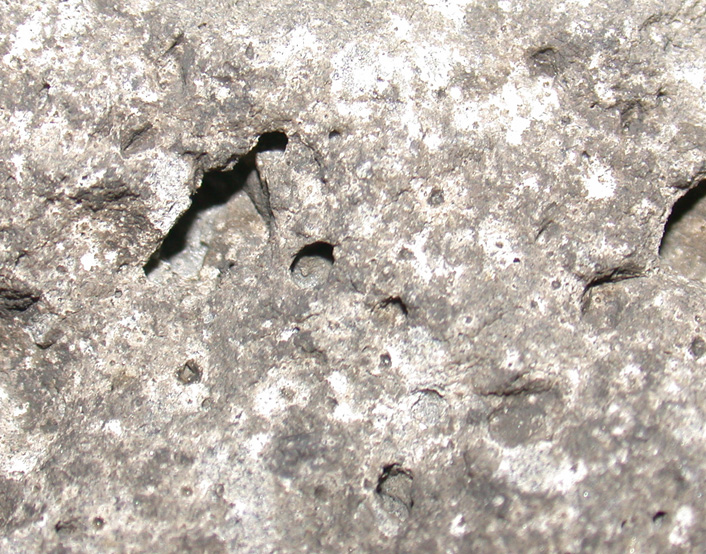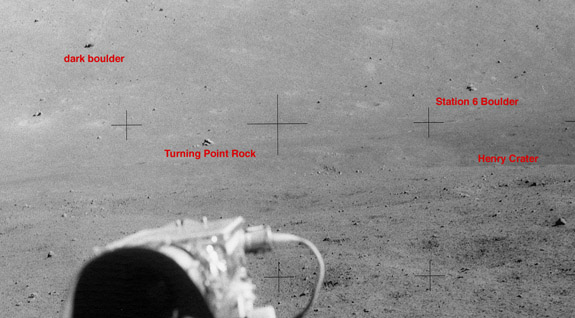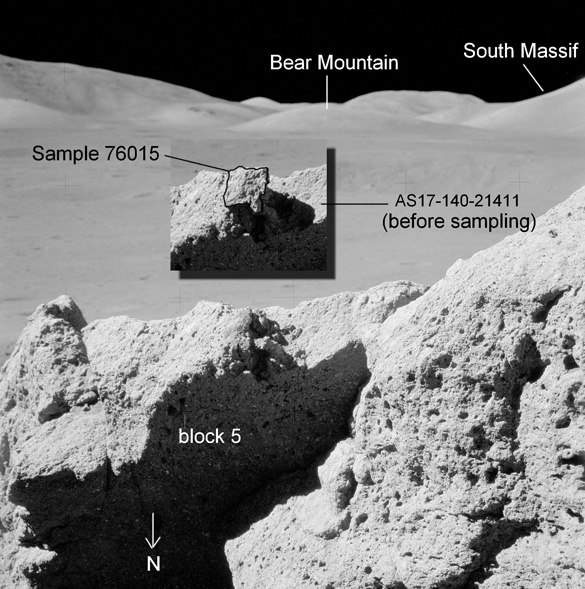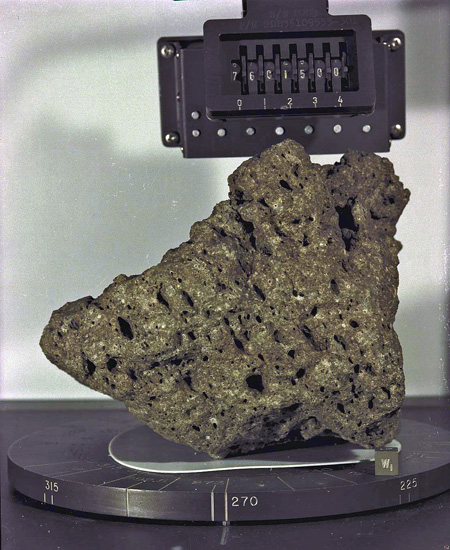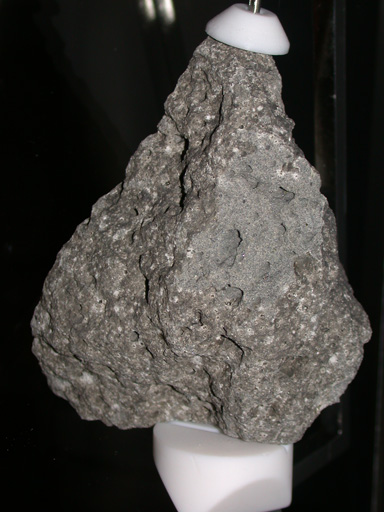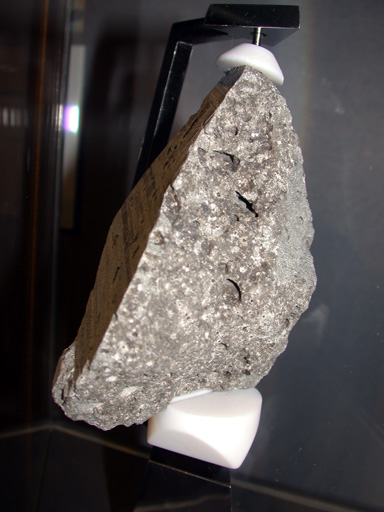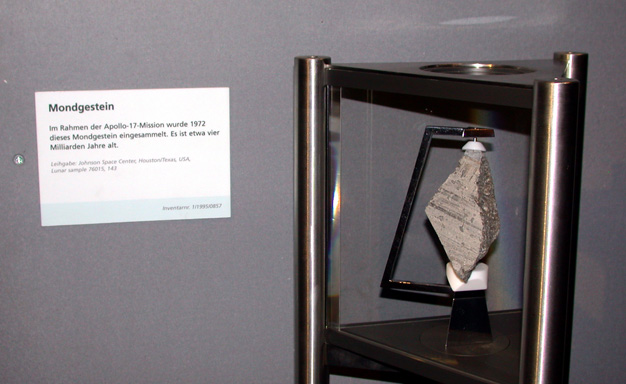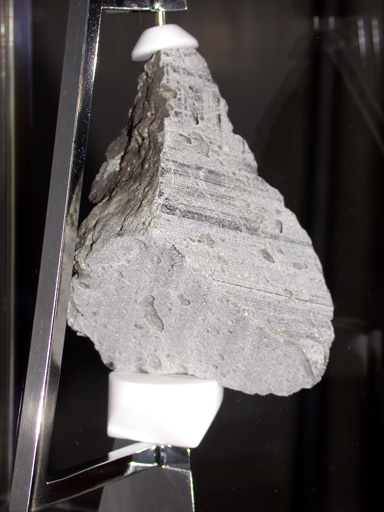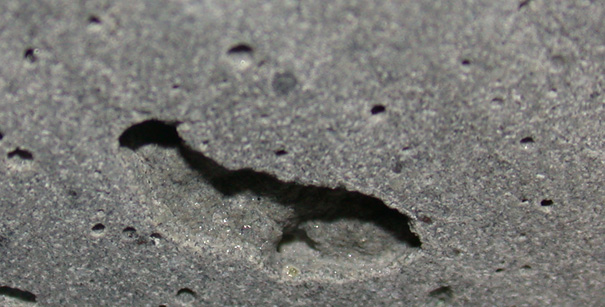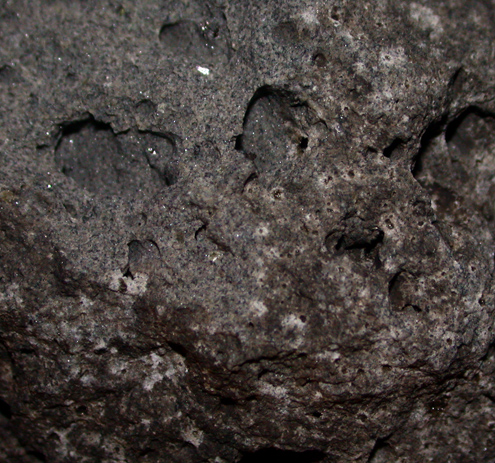
| Journal Home Page | Apollo 17 Journal |
Apollo 17 Sample 76015, 143
Copyright © 2007 by Ulrich Lotzmann and Eric Jones.
All rights reserved.
Last revised 28 July 2007.
Close-up of the outer surface as the astronauts saw it on the Moon. The large depressions are vesicles: the imprints of gas bubbles trapped in the rock in its molten state following a massive impact. The light-colored areas are are centered on "zap pits": small craters blasted into the rock surface by small impactors as it sat on the lunar surface. The light colored regions represents rock shattered in the immediate vicinity of each of the tiny impacts. In some cases, small amounts of melt was produced and was ejected onto the surrounding surface. The display portion shown here - 76015, 143 - weighs 333-gram. Photographed by Ulli Lotzmann in December 2006 at Deutsches Technikmuseum Berlin.
Location of the Station 6 Split Boulder (upper right).
Photo taken by Jack Schmitt during the drive north from the LM.
Click on the image for a larger version.
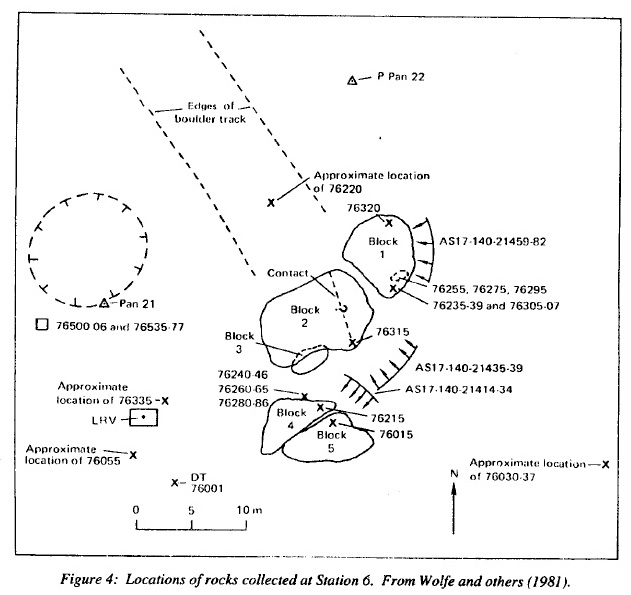
Plan view of Station 6.
Sample 76015 was lifted off the top
of Block 5. The Station 6 boulder rolled, bounced, and slid down the
North Massif from an outcrop much higher on the mountain. It carved a
boulder track diagonally down the mountain as it moved from upper left
to lower right in the plan map. It came to a stop when it encountered a
flatter slope at its present location. It must have landed pretty hard
as it stopped, because it broke into five major pieces.
Figure from the Apollo 17 Sample Catalog, Volume 4.
This "after" photo, AS17-140-21413,
shows the location from which sample 76015, a 2.8 kg, loose fragment of
vesicular melt breccia, was removed. The inset (from AS17-140-21411) is the "before" photo.
This whole-rock photo shows the outer surface that they astronauts would have seen before lifting the sample off of Block 5. Photo courtesy Mike Gentry, NASA Johnson. Click on the image for a larger version.
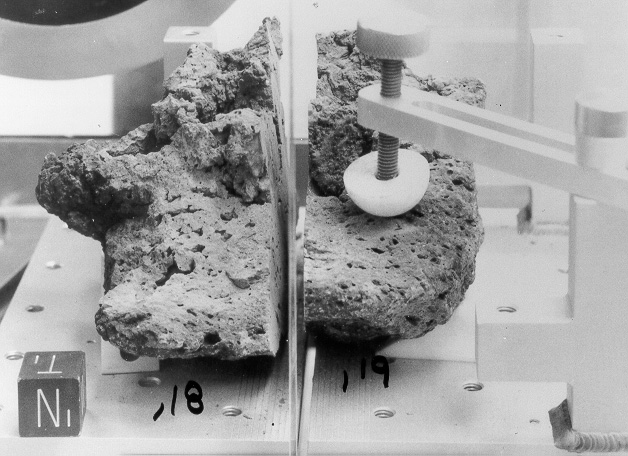
NASA photo S76-21672 shows sample 76015 after being saw cut at the Lunar Receiving Laboratory in 1976. Lunar samples destined for scientific analysis and/or public display were divided into several pieces, some of which were put directly into secure storage for later use. Sample portion 18 is on the left. Portion 19, the parent of display portion 143, is on the right. Photo courtesy Charles Meyer, NASA Johnson.
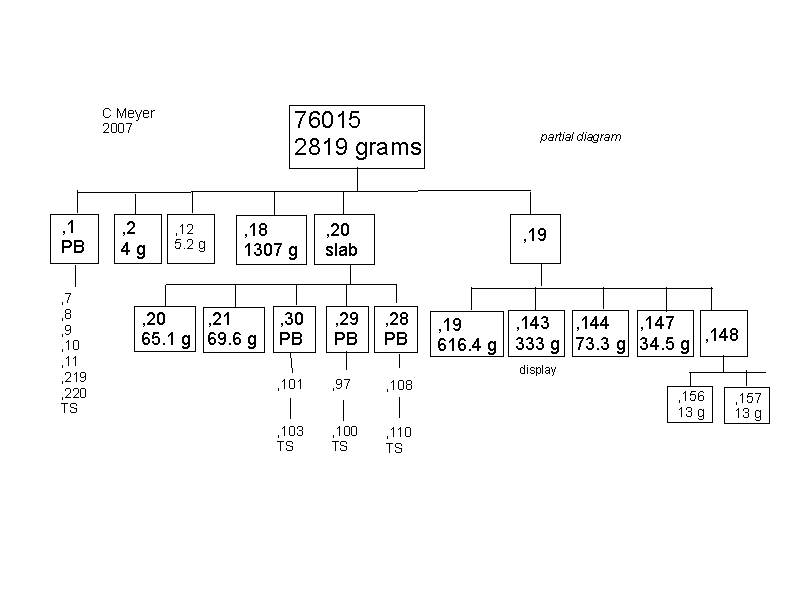
Diagram showing the parentage of 76015, 143. Courtesy Charles Meyer, NASA Johnson.
Apollo 17 sample 76015, 143 as displayed at Deutsches Technikmuseum Berlin in December 2006. We are seeing the outer surface. There appears to be a fresh face to the left of center, one largely devoid of zap pits, that may have resulted from a piece breaking off.
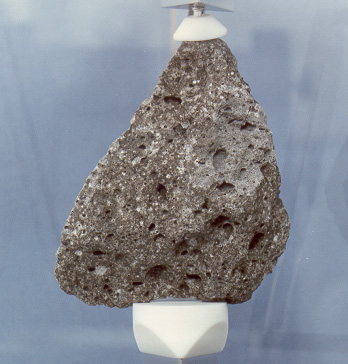
NASA photo S87-34948 shows sample 76015,143
after being prepared for public display. This portion weighs 333 grams.
We
are seeing the natural surface. This view was taken from a view point
slightly to the left of the prior image. The edge of the larger of two
saw cut surfaces is on the left. Photo courtesy Charles Meyer, NASA
Johnson, who prepared the display sample.
Side view of the major saw cut as seen on the display portion at Deutsches Technikmuseum Berlin. The gray area on the right, just above the bulge is the fresh surface, noted previously, that is devoid of zap pits. Photographed by Ulli Lotzmann in December 2006.
Display at Deutsches Technikmuseum Berlin.
The label
reads,"This moon rock was collected during the Apollo 17 mission. It is
about 4 billion years old." The major saw cut surface is almost facing
the camera and the edge of the secondary saw cut surface at the lower
left. Photographed by Ulli Lotzmann in December 2006. Click on the
image for a larger version.
View showing the major saw cut surface on the display portion at the upper right. The horizontal lineations are undoubtedly relics of the cutting process. The secondary cut surface is on the bottom. Photographed by Ulli Lotzmann in December 2006 at Deutsches Technikmuseum Berlin.
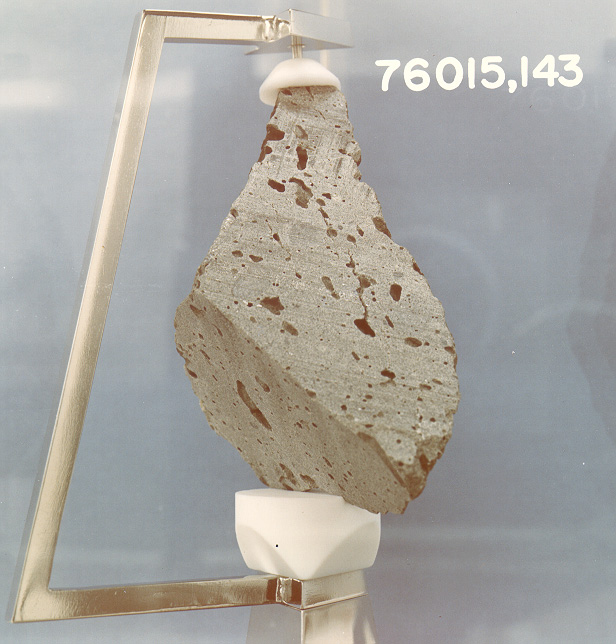
View showing the major saw cut surface at the upper right. The secondary cut surface is on the lower left. Photo courtesy Charles Meyer, NASA Johnson.
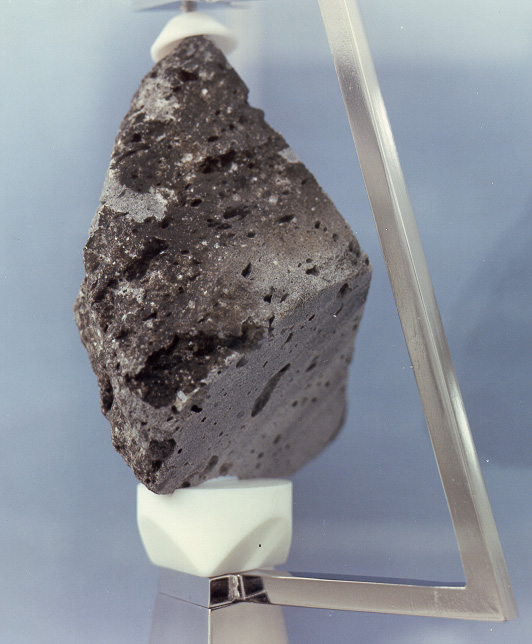
NASA photo S87-34949 shows the secondary cut surface at the bottom. The edge of the major saw cut surface is on the right. Note the elongated vesicle on the secondary sawcut surface. Photo courtesy Charles Meyer, NASA Johnson.
Close-up of the elongated vesicle on the secondary saw cut surfaces. Photographed by Ulli Lotzmann in December 2006 at Deutsches Technikmuseum Berlin.
Close-up of vesicles and zap pits. Photographed by Ulli Lotzmann in December 2006 at Deutsches Technikmuseum Berlin.
